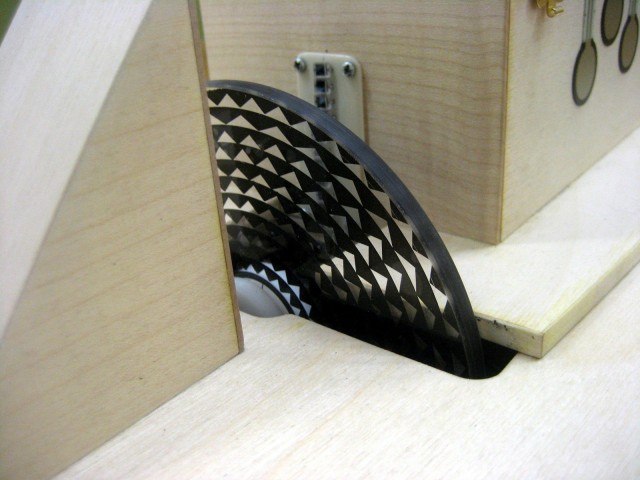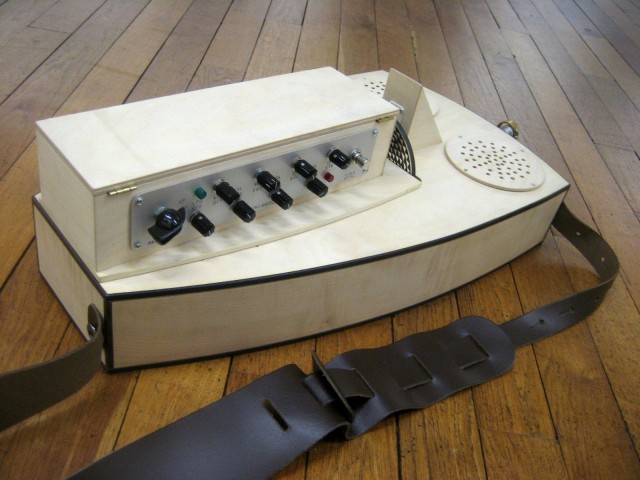This isn’t like any Hurdy-Gurdy you’ve seen or heard before.
Derek Holzer’s optoelectronic Tonewheels Hurdy-Gurdy is a combination of mechanical, optical, and electronic elements, part sculpture and part instrument. It recalls vintage mechanical and optical instruments, but with a sound that is decidedly modern and strange.
In the translation, something wonderful happens: this becomes a serious punk instrument, producing surprising, hard-edged sounds. The wheels turn, and the gizmo rocks.
Combining disciplines in this sort of design also means merging different skill sets, so it’s telling that input for the instrument has come from other artists, including friend-of-the-site circuit designer Eric Archer, who has been involved in our Handmade Music series (now MusicMakers). Coming full circle (ahem), I’m thrilled that Mr. Holzer will be organizing MusicMakers at CTM here in Berlin. We have a call out now to participate in the hacklab for that event; I’ll share more details on that event here in the coming days.
I’m a great fan of Derek’s work; there’s plenty to explore below and I hope we cover more soon.
TONEWHEELS HURDY-GURDY(VIELLE A ROUE OPTOÉLECTRONIQUE) from macumbista on Vimeo.
This optoelectronic hurdy-gurdy was commission by the Acces(s) Festival, Pau France in October 2012.
TONEWHEELS is an experiment in converting graphical imagery to sound, inspired by some of the pioneering 20th Century electronic music inventions, such as the Light-Tone Organ (Edwin Emil Welte, 1936 Germany), the ANS Synthesizer (Evgeny Murzin, 1958 USSR), and the Oramics system (Daphne Oram, 1959 UK). Transparent tonewheels with repeating patterns are spun over light-sensitive electronic circuitry similar to that used in 16 & 35mm motion picture projectors to produce sound.
The TONEWHEELS Hurdy-Gurdy presented at Acces(s) is not an “interactive” artwork in the common sense. While it does not reward the impatient museum visitor with flashing lights and noises at the simple touch of the button, it does invite participation in the process of technological music creation. Although it first appears to be a very traditional instrument known to many folk-music cultures, it functions in a very different way which can only be discovered by playing it.
The artist would like to thank Tobias Traub of Oroborus Customs e.K. and Carlo Crovato for their invaluable assistance in creating this instrument. Circuits designed by Jessica Rylan and Eric Archer are also used within the system.
More information on this project can be found at macumbista.net/?p=3020
This is just one piece out of the Tonewheels project, all working with this medium of physical, optical discs. Here’s a beautiful video from another iteration:
cuT 30[draft]-TONEWHEELS filmed by Eyes_For_Ears from macumbista on Vimeo.
The over-arching project has its own page:
http://umatic.nl/tonewheels.html
The Hurdy-Gurdy is described on Derek’s blog:
http://macumbista.net/?p=3020
And lots of other projects, including his new Solstice Soundboxes, are detailed there, as well:
http://macumbista.net/
Hope some of you get to see Derek and me in person in Berlin next month, and for everyone else, we’ll see you on the Internet.
All photos courtesy the artist.


